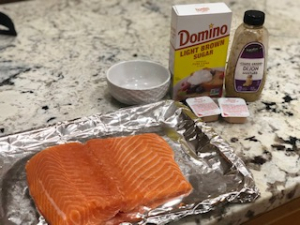MUNDANE MYSTERIES: Why Are Graves Six Feet Deep?
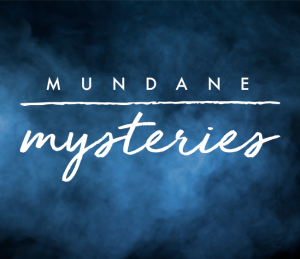
Why are graves “six feet deep”? Who decided that?
Well, the simple answer: it started with the plague. The beginnings of the phrase “6 feet under” came from an outbreak of the plague in 1665 England. As the plague devastatingly swept across the country, London’s mayor at the time decreed precisely what was to be done with all the bodies left in the disease’s wake, in order to avoid further infections. Among the specifications he laid out was that “all the graves shall be at least six feet deep.”
Over time, though, that law fell out of favor both at home in England & across the pond in the American colonies. Burial laws nowadays differ from state to state, but many states only require a minimum of 18 inches of soil on top of a casket or vault. For a body not enclosed in anything, the required depth is at least 2 feet of soil. So, with 18-inches of dirt as a buffer, combined with the height of the average casket (around 30 inches), a grave as shallow as 4 feet is technically fine.
A burial today involves filling a body with chemical preservatives, sealing it inside a sturdy metal casket, then enclosing that casket within a steel or cement burial vault. It’s a much less hospitable environment for microbes now than old graves once were. For non-typical burials (where a body isn’t embalmed, a vault isn’t used, the casket is wood instead of metal, or there’s no casket whatsoever), the less strict burial standards still provide a measure of safety & comfort. Without any protection, though, after a few years of soil erosion the remains of a departed loved one could unexpectedly (and problematically) resurface. You don’t want those remains getting too close to still-living humans, since they could likely spread disease (and, not to mention, scare the living daylights out of you).
How human remains are currently processed after having “shuffled off its mortal coil” is currently safe & prudent. And, as you now know, there’s good reason behind why the final resting places of the dearly departed are where they are.
Got a Mundane Mystery you’d like solved? Send me a message via social media (@AndyWebbRadioVoice), or shoot me an email at [email protected].
{Katie’s Baby Blog} Big Sister Lily
 Lily is so excited to be a big sister…I think…I’m not actually sure she really knows what it means yet; but I think she will be when the baby comes!
Lily is so excited to be a big sister…I think…I’m not actually sure she really knows what it means yet; but I think she will be when the baby comes!
I ask her all of the time if she’s excited and she says yes! Then she says “baby in your belly?” then she pulls up her shirt and looks at her own belly with a very confused look on her face! It’s so cute… 😉
I’m wondering what she’s going to think once I really start showing and my stomach starts growing. Knowing her, she will be too busy playing My Little Pony’s or with her baby dolls to notice.
This time around is really kicking my butt! Like I said last week, keeping up with a 2 year old while your pregnant is CHALLENGING. I’m still waiting to get that “2nd trimester energy” back (I don’t think it’s coming).
The BEST part of pregnancy this time around…the weeks seem to be flying by. Chasing a 2 year old also helps you to not focus as much on how lonnnnng 9 months can be until you meet baby. I find it going by quick this time and am surprised that I’m already at my next appointment and 4 weeks have gone by.
15 weeks and counting…
<3 Katie Ryan
MUNDANE MYSTERIES: Why Do People Love Horror Movies?
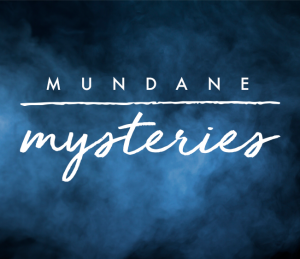
It’s that time of year: horror movie time! Now I think we can all agree that, when it comes to scary movies, people either love ‘em or hate ‘em. Not too many people are neutral on the subject. But for those of us who love terror flicks, the question usually asked by those who don’t care for them is: “Why?” Well, if you’re a fan of scary movies (as I am), there are some possible reasons why:
Experts agree:
- Horror movies trigger your brain’s fight or flight response. So, being scared gives you an adrenaline rush.
- Even though you’re terrified & your heart’s racing, you know you’re safe. There’s something about getting to that edge…then turning back, knowing you are not in any real danger.
- Watching fictional characters deal with terror helps us learn how to deal with our own fears & anxieties. The world can be a scary place sometimes, so watching scary movies can help you prepare for the worst & learn how to cope.
- It lets you explore your own dark side. While people may not want to admit it, there are parts of ourselves that intuitively want to lash out sometimes. Watching horror movies allows a person to do that in a non-harmful way.
- It makes you think you’re different than the victim, and therefore more likely to survive. Watching people in horror movies make stupid moves & decisions convinces us that, if we were in those situations, we wouldn’t make those poor choices & would likely survive.
So binge on a good horror flick marathon tonight or this weekend…in a weird way, it’s good for you! (Sort of.)
Got a Mundane Mystery you’d like solved? Send me a message via social media (@AndyWebbRadioVoice), or shoot me an email at [email protected].
Come on! How is Butterfingers…Candy Video Update
Candy Press Conference "BullFingers"
I corned Gabby on 99.9 WFRE to get a full report on this candy bracket!!!! PUSH BUTTERFINGERS!!!!!https://digitalivy.com/ANNDPE#/bracket
Posted by Patrick Hanes on 99.9 WFRE on Wednesday, October 21, 2020
How is this happening?!?!?!
MUNDANE MYSTERIES: Why Does My Arm Hurt After Getting A Flu Shot?
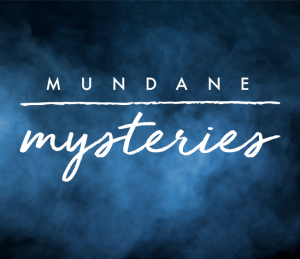
Gotten your flu shot yet this year? If you have, good on you! If you haven’t…do it!
If you’ve ever gotten a flu shot in your life, though, your upper arm probably felt sore for a day or two. And, according to immunologists, that’s just a sign that the vaccine’s doing what it’s supposed to.
The way the influenza vaccine works, it introduces a foreign substance called an antigen into your body, which, in this case, is a deactivated/“dead” virus similar to the flu. When you expose cells in your immune system to an antigen, it “primes” them to create antibodies if/when they ever encounter that foreign substance again. Because it’s an inactive virus in the vaccine, it can’t make you sick. But, it does sensitize your immune system to potential threats. So, basically, the vaccine puts your body on high alert for anything resembling the flu, which enables you to fight off infections & illnesses faster & more effectively than without the vaccine.
When it takes on that inactive flu virus, your immune system also puts out histamines. They cause inflammation, which is important during an infection, since it helps your body fight off the bad stuff & repair damage. But, that’s also what causes soreness. The flu shot, usually injected into your upper arm, is why your body’s early immune response (and pain) tends to be concentrated there.
Around 1-in-5 people have this sort of painful reaction. But, if you tend to be sore after receiving a flu shot, there are a few things you can do to alleviate the pain. Doctors advise taking ibuprofen about 2 hours before getting the shot. Also, try putting ice on the injection site to reduce redness & swelling. Be sure to move your arm around after getting the shot, too, so the vaccine isn’t as concentrated in just the one place. Aside from that, try getting the vaccine in your non-dominant arm so any pain doesn’t interfere with your everyday activities.
Any pain is worth it, though, since odds are that you could get the flu in the future, even if you’ve never gotten the flu before. And, getting a flu shot contributes to herd immunity, as well, helping to protect those around you at higher-risk like children, older adults, and those with chronic illnesses who often can’t get the flu vaccine themselves. Keep your vaccines up-to-date! It’s an easy way to help keep your community healthy, and, with most insurances, it’s free!
Got a Mundane Mystery you’d like solved? Send me a message via social media (@AndyWebbRadioVoice), or shoot me an email at [email protected].
How I voted in the Candy Battle/Bracket
These are my picks for Gabby on 99.9 WFRE Candy Bracket. This video starts as a joke. Watch as I slowly buy into this completely and DEMAND JUSTICE FOR BUTTERFINGERS!!!!
Posted by Patrick Hanes on 99.9 WFRE on Tuesday, October 20, 2020
How is Butterfingers losing like this!?!?!?! Fix this. Vote in the candy battle. We still have time. WHAT IS HAPPENING!?!?!?!
MUNDANE MYSTERIES: Why Do We Wear Costumes At Halloween?
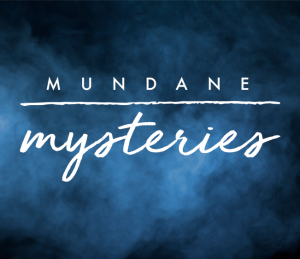
Though it’ll probably look & feel a bit different this year (thanks COVID), Halloween’s almost here. And everyone is trying to figure out exactly how they want to dress up. But why do we put on costumes on “All Hallows’ Eve”?
There’s no single explanation for how the tradition of wearing Halloween costumes originated. Much like Halloween itself, our ritual of dressing up is the result of a hodgepodge of traditions from across the ages & around the world.
A lot of historians suspect it comes from the Celtic festival of Samhain, celebrated between the autumn equinox and the winter solstice. Samhain marked the official start of winter, known to Celts as “the dark season’, when it was believed that the world of the gods was “made visible to humankind”.
That idea made the Celts a bit uneasy, since they believed their deities liked to play tricks on human worshippers. So, many festival-goers would disguise themselves as animals or beasts to hide from any malevolent spirits that might bring them misfortune.
If you were to fast forward a few hundred years, the modern-day practice of dressing up & trick-or-treating has its roots in the European custom of “mumming & guising.” Mummers were folks who’d dress up in costumes, a lot of times woven from straw, to perform plays & songs for neighbors in exchange for food. Scottish & Irish immigrants brought that tradition over here to North America, where it later morphed into what we now know as trick-or-treating.
It wasn’t until the mid-1900s, however, that Halloween costumes really hit their stride. And we have New York City entrepreneurs Ben & Nat Cooper to thank for that. They started a company (Ben Cooper, Inc.) that produced inexpensive pop culture-themed costumes to help kids become the characters they idolized from TV & comic books. The company would oftentimes purchase merchandising rights before characters ever even became popular. Thanks in no small part to the Coopers’ innovation, Halloween costumes became an accessible & even necessary part of holiday festivities.
Today, Halloween costumes are big business. According to the National Retail Federation Americans will spend about $3.2 billion on costumes this year (of which, about half a billion will go to costuming our pets). I just wonder what the ancient Celts might have thought about our Halloween costumes nowadays.
Got a Mundane Mystery you’d like solved? Send me a message via social media (@AndyWebbRadioVoice), or shoot me an email at [email protected].
{Katie’s Kitchen} Special Glaze Salmon
 Brought to you by Catoctin Mountain Orchard.
Brought to you by Catoctin Mountain Orchard.
Who likes Chick-fil-A?!!?!?! ….now what about their chick-fil-a sauce?? Yes! It’s so good.
One of my friends posted this recipe that she made up because she also is obsessed with the sauce, so I had to steal 🙂
Pre-heat the oven to 400 degrees.
I used 1lb of fresh Atlantic salmon that I got from a local seafood deli and placed it on a baking sheet with parchment paper/ foil (I always ask for it to be skinned; your choice!).
In a small bowl, scoop out one container of the chick-fil-a sauce, then add 1 tbsp. of brown sugar and 1 tbsp. of Dijon mustard. Mix together!
Then spread evenly over your salmon (Double if you have more salmon).
Bake for 20 minutes. ENJOY!
INGREDIENTS:
-1 container Chick-fil-A sauce
-1 tbsp. brown sugar
-1 tbsp. Dijon mustard
-1 lb. Fresh Atlantic Salmon
